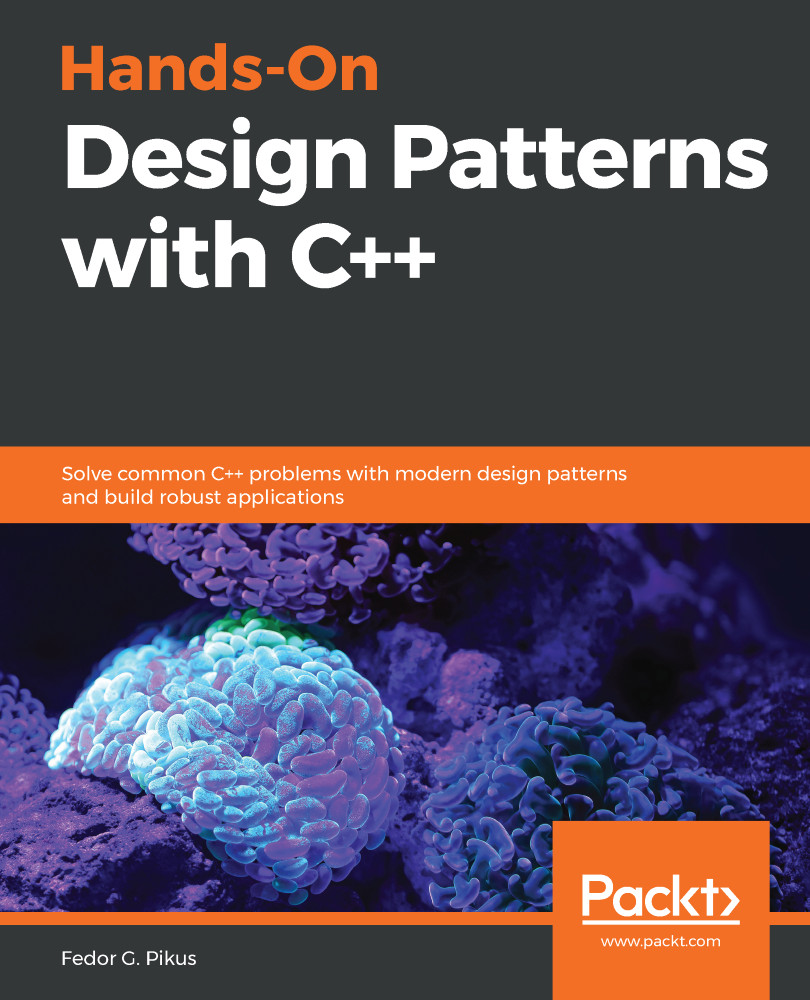The template programming features of C++ form a large and complex subject, with many books dedicated exclusively to teaching these features. In this book, we will use many of the advanced C++ generic programming features. How, then, should we prepare the reader to understand these language constructs as they make their appearance throughout this book? This chapter takes an informal approach—instead of precise definitions, we demonstrate the use of templates through examples and explain what the different language features do. If you find your knowledge lacking at this point, you're encouraged to seek a deeper understanding and read one or more of the books dedicated entirely to the C++ language that's focused on explaining its syntax and semantics. Of course, the reader wishing for more precise, formal description is referred to the...
-
Book Overview & Buying

-
Table Of Contents

Hands-On Design Patterns with C++
By :

Hands-On Design Patterns with C++
By:
Overview of this book
C++ is a general-purpose programming language designed with the goals of efficiency, performance, and flexibility in mind. Design patterns are commonly accepted solutions to well-recognized design problems. In essence, they are a library of reusable components, only for software architecture, and not for a concrete implementation.
The focus of this book is on the design patterns that naturally lend themselves to the needs of a C++ programmer, and on the patterns that uniquely benefit from the features of C++, in particular, the generic programming. Armed with the knowledge of these patterns, you will spend less time searching for a solution to a common problem and be familiar with the solutions developed from experience, as well as their advantages and drawbacks. The other use of design patterns is as a concise and an efficient way to communicate. A pattern is a familiar and instantly recognizable solution to specific problem; through its use, sometimes with a single line of code, we can convey a considerable amount of information. The code conveys: "This is the problem we are facing, these are additional considerations that are most important in our case; hence, the following well-known solution was chosen."
By the end of this book, you will have gained a comprehensive understanding of design patterns to create robust, reusable, and maintainable code.
Table of Contents (21 chapters)
Preface
 Free Chapter
Free Chapter
An Introduction to Inheritance and Polymorphism
Class and Function Templates
Memory Ownership
Swap - From Simple to Subtle
A Comprehensive Look at RAII
Understanding Type Erasure
SFINAE and Overload Resolution Management
The Curiously Recurring Template Pattern
Named Arguments and Method Chaining
Local Buffer Optimization
ScopeGuard
Friend Factory
Virtual Constructors and Factories
The Template Method Pattern and the Non-Virtual Idiom
Singleton - A Classic OOP Pattern
Policy-Based Design
Adapters and Decorators
The Visitor Pattern and Multiple Dispatch
Assessments
Other Books You May Enjoy

